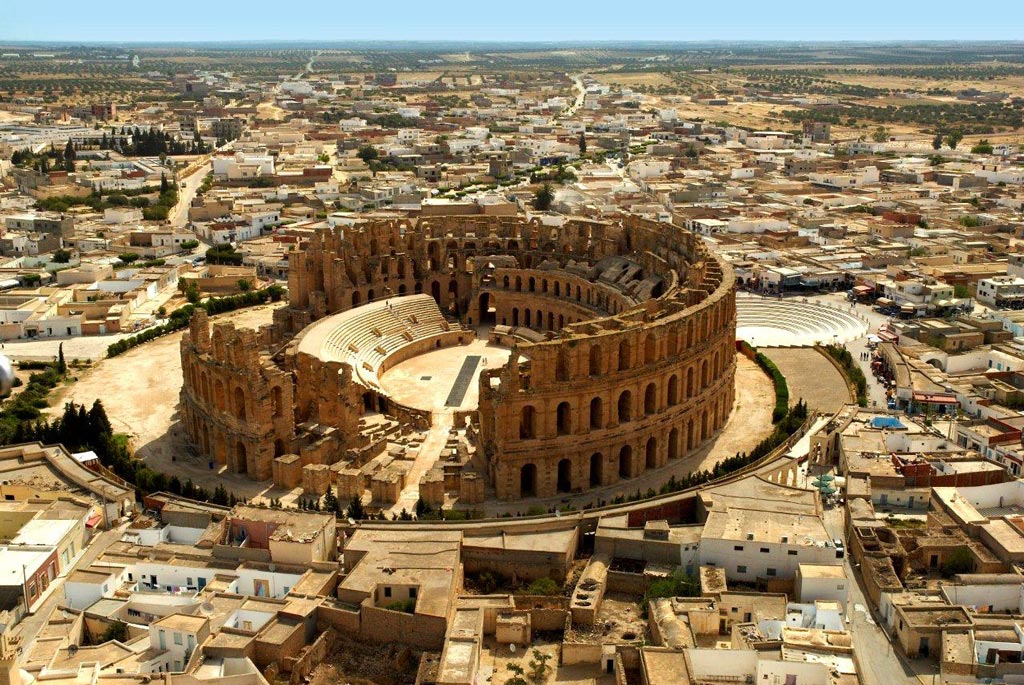
Here are some of the most iconic and awe-inspiring historic monuments of Tunisia.
📍 El Djem, Mahdia Governorate
A UNESCO World Heritage Site, the El Jem Amphitheatre is one of the largest and best-preserved Roman amphitheaters in the world. Built in the 3rd century, it once hosted gladiator battles and could hold up to 35,000 spectators — almost as many as Rome’s Colosseum.
📍 Carthage, near Tunis

The legendary city of Carthage was founded by the Phoenicians and later destroyed by Rome in the Punic Wars. Today, you can explore ruins like the Antonine Baths, Roman villas, Byrsa Hill, and the mysterious Tophet, believed to be a Phoenician child-sacrifice site.
📍 Tunis

A maze of narrow alleys, souks, palaces, and mosques, the Medina of Tunis is a vibrant UNESCO World Heritage Site. Founded in the 7th century, it houses iconic buildings like the Zitouna Mosque, which has 160 columns taken from ancient Roman sites.
📍 Near Téboursouk

Often referred to as the “Pompeii of Africa,” Dougga is an exceptionally well-preserved Roman city featuring a Capitol, theatre, temples, and villas with stunning mosaics. Its elevated location offers sweeping views of Tunisia’s green north.
📍 Kairouan

Built in 670 AD, this mosque is one of the oldest in the Islamic world. Known as Oqba Mosque, it’s revered as the fourth holiest site in Islam and a masterpiece of Islamic architecture.
📍 Monastir

Originally a military fortress built in the 8th century, the Ribat of Monastir also served as a spiritual retreat for Muslim warriors. It overlooks the Mediterranean and offers panoramic sea views from its watchtower.
📍 Sousse

Sousse’s old city is another UNESCO site, featuring an impressive Kasbah, a Great Mosque, and a Ribat. It is surrounded by ramparts and retains its medieval Islamic charm.
📍 Cap Bon Peninsula

Kerkouane is the only remaining pure Punic city that wasn’t rebuilt by Romans. Abandoned in the 3rd century BC, it remains an open window into Carthaginian urban planning, featuring homes, sanctuaries, and even a rudimentary sewage system.
Cultural Depth: From ancient Carthage to Islamic Kairouan, Tunisia’s history spans millennia.
Architectural Wonders: Roman, Arab, Berber, and Ottoman styles intertwine across cities and ruins.
Accessibility: Many sites are within day-trip distance from major cities like Tunis, Sousse, or Sfax.
Spring (March–May): Ideal for visiting ruins and cities before the summer heat.
Autumn (September–November): Pleasant weather and fewer tourists.
Whether you're a history enthusiast, an architecture lover, or simply curious about Tunisia’s unique past, its monuments are unforgettable. From the Roman stones of El Djem to the sacred walls of Kairouan, each tells a story that shaped North Africa — and the world.